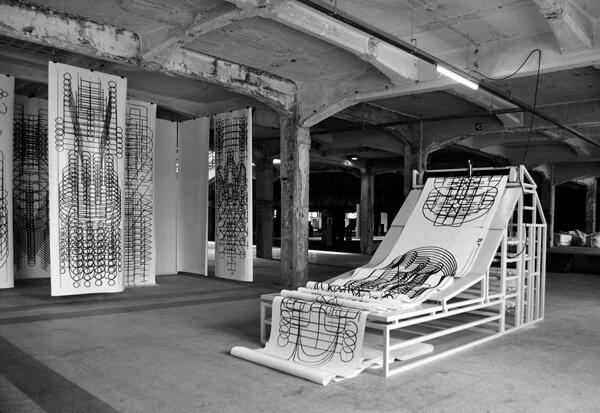Heritage Symposium at Manifesta 9. The Future Under Construction.
The Mexican curator Cuauhtémoc Medina, developed the concept for the Manifesta 9 exhibition ‘The Deep of the Modern’.

During his prospective study through the Limburg Mine region he was impressed and surprised by the remains of a large-scale and radical industrial past. The inhabitants of the region are accustomed to seeing the slag heaps, shafts and industrial complexes within the landscape, and experience its presence as part of their daily lives. But still, they are not aware of the specific meaning of these monuments. This also holds true for the visitors who, just like the curator, are struck by the richness of this material and immaterial heritage. Medina therefore posed the important question on the future of the region’s heritage and on how the different agents involved are planning to safeguard it but also give (new) meaning to it for coming generations.
That’s why Manifesta 9, the Heritage unit Mijn-Erfgoed and the Province of Limburg combined their efforts to launch some new initiatives concerning this extraordinary heritage – an international symposium at C-mine, Genk on September 13 and 14 2012, being one of these. At the symposium a ‘Manifesto for the Mine region’ will be presented. The participants are asked to reflect on this issue in which current heritage policy is evaluated and specific steps for the future are formulated. Furthermore the role of the region’s past for the future of the inhabitants as well as for the visitors is formulated. A first version of this manifesto has already been prepared during two workshops. The symposium thus offers a unique platform for comparing and evaluating the vision of the local actors with the experience and expertise of (inter)national speakers, and to intensify the dialogue between the public, the agents and the policy-makers.
An overview of the invited speakers communicates that the symposium addresses representatives of all the different sectors that are indirectly linked with heritage (tourism, economy, the social sector, art, landscape,…). For example, Keith Falconer (English Heritage, UK), Cathérine Bertram (Mission Bassin Minier, FR) and Bettina Steindl (RUHR.2010, G) but also Nico Nelissen (Em. Professor Radboud University, NL) and An van Dienderen (Postdoctoral researcher K.A.S.K., University Ghent, B) will present new perspectives on the possibilities of immaterial heritage for the future of the Mine region.
Medina States: “We departed from observing the divided responses that the heritage of coal mining provokes today in regions such as Limburg: the gap between the energy of the memory practices of the ex-miners and the difficulty of incorporating that past in the challenges and dilemmas of the present. Such dichotomy is lived in a wider perspective in terms of a conflict between nostalgia and fear to the past, which in effect define many of the ideological and political affiliations in Europe. We want to use the exhibition format of the biennial as an opportunity to challenging such reactions, and to give a context for the work of contemporary artists who address the predicaments of the past and present of different the industrial eras”.
The curatorial team -Cuauhtémoc Medina, Katerina Gregos and Dawn Ades- made an unusual combination of art and heritage, as well as the first attempt in history to provide the visitors an overview of how coal mining influenced modern art. For the first time, Manifesta took place in a single venue. The starting point is the location: the coal-mining region in north-eastern Belgium and the previously abandoned recently restored Waterschei mine complex in Genk. This is a landscape with many layers - garden cities, factories, canals, roads and railroads built throughout the 20th century to serve the coal-mining industry.
Also, Medina declared: “We would hope that it is through the mediations of culture that artistic practice can have a role in challenging and transforming political hegemonies, which does stand clear from, also, a common dichotomy in the so called art world: the deceptive fashion of invoking a vague idea of the "political-poetic" to once again define political significance as a matter of a sterile thematic or the impulse to deny the political significance of culture in favor of activism per se, even when this is devoid of a larger context”.
-
 Installation: machine, coal, steel, epoxy paint and paper banners
Installation: machine, coal, steel, epoxy paint and paper banners
Variable dimensions - Manifesta 9
Courtesy of the artist




